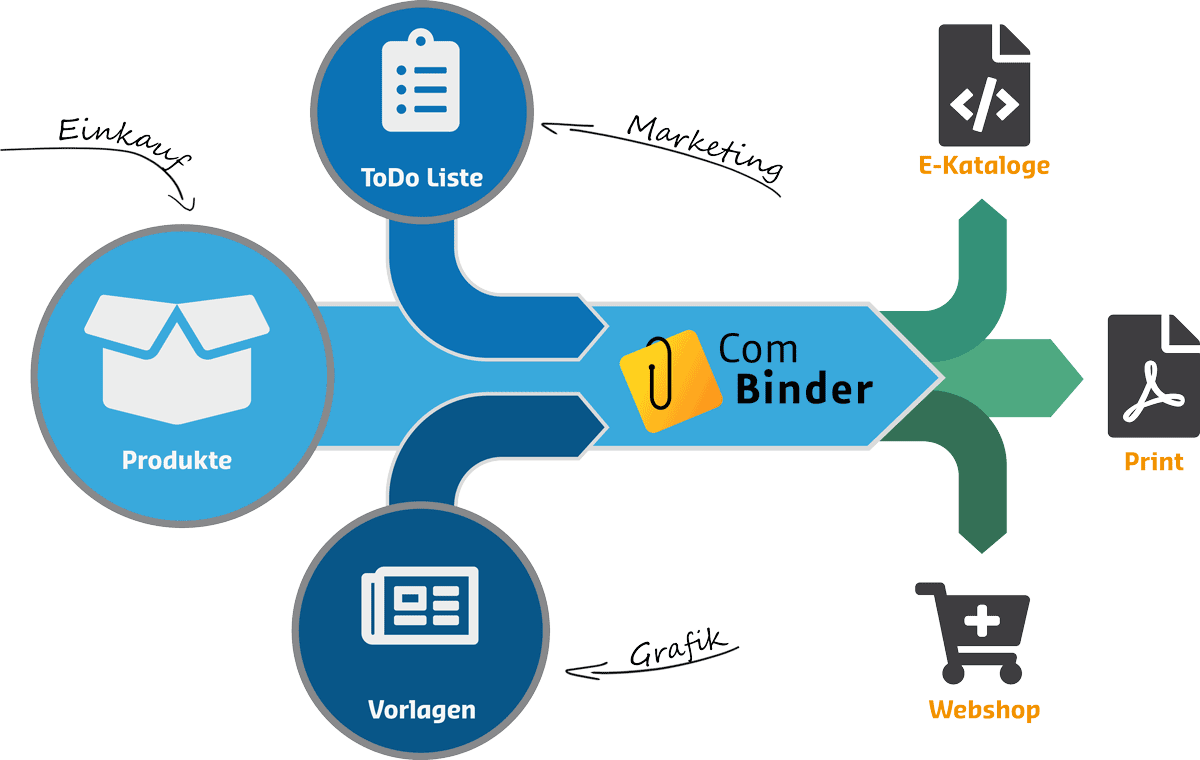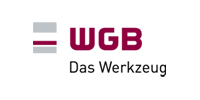
ComBinder PIM
BMEcat PIM
Manage with ease

ComBinder PIM Components
PIM — Manage and maintain products
With ComBinder PIM you get a BMEcat PIM (Product Information Management) with which you can easily implement central data management. The clear presentation of product data (image, text, price) distinguishes the ComBinder PIM. Teamwork is in the foreground and is ensured by transaction-safe processes.
Your product data is transferred or synchronized from various systems/data sources. The ComBinder PIM is in the form of an elegant BMEcat converter. We rely on the BMEcat catalogue (2005) data model, which leaves nothing to be desired in terms of flexibility. The large scope of data types as well as the classification and structuring by means of e.g. ETIM or eCl@ss is thus available to you.
For the translation of your product texts we have integrated the AI-based DeepL. This allows you to add another language to individual texts or entire products in ComBinder – automatically!
DAM — Manage and maintain images
The system’s built-in DAM (Digital Asset Management) easily integrates your media data into the workflow. In the DAM module you structure the media data (attributes, ratings) and with a powerful search you find the desired media.

Print-Modul — Create catalogs
The products managed in ComBinder PIM can be published via output channels. The system distinguishes two application areas here. On the one hand, there is the way to the print object, i.e. a classic catalog or brochure, and on the other hand, the dispatch in electronic form.
Catalogs or print objects in general can be compared to a CMS. The product data is linked to page templates. In a further step, a graphical adjustment is then made, depending on the application. One advantage of this process is the separation of competencies. Marketing determines WHAT appears in the catalog and the graphics department (internal/external) takes care of the HOW – the design. Everyone is an expert in their field and a great asset for quality and efficiency. The ComBinder PIM is designed exactly for this model and supports this process in all steps.

The system generates the catalogue from the product data and the page templates (IDML files). Other derivations include tables of contents or indexes, and price lists.
Once documents have been laid out, they can be loaded into ComBinder and updated with new product data. You can also use this method to create language versions of the catalog or to incorporate recalculated prices into offer brochures.

Shop-Modul — Multichannel, let’s go!
You compile the appropriate products for your stores and fill them directly from the ComBinder PIM. You can distribute product data updates with a few clicks.
We have built in ComBinder PIM adapters for the popular webshops (Shopware5/6, Magento2, WooCommerce, Ebay, Squarespace) where you can distribute your products.
Industries — Who is ComBinder PIM made for
Manufacturer and producer
The ComBinder PIM is designed for small and medium-sized enterprises (SMEs). The number of products can well be taken as a benchmark. Companies that have to manage more than 100-200 products quickly reach the limit of maintainability with Excel and Co. From this point on, it is important to consider what is the appropriate tool for sales.
Other parameters are the requirements for the distribution channels. If customers require a standardized exchange of product data (e.g. BMEcat), the switch to a professional tool is a given anyway. If markets abroad are served, the management of language variants is a decisive factor.
Dealers and resellers
For dealers and resellers, the exchange of product data in standardized form is the silver bullet. For this purpose, we have integrated the BMEcat data model into the ComBinder PIM and are well equipped with the complete flexibility as well as the scope to offer solutions in diverse business sectors (e.g. tools, construction, …).
In addition to the exchange of product data via electronic catalog, the path of product data into a web store is a “must have”. The ComBinder PIM supplies all common webshops (Shopware5/6, Magento2, WooCommerce, Squarespace) – BMEcat to Webshop!
Design Agencies
For you as a design agency, the ComBinder PIM opens up further service channels. On the one hand, you design templates and realize the production of the print objects. Your customer provides the product data or you do this as well. On the other hand, you offer the creation of a store. On the same data basis.
ComBinder PIM use cases
WAWI system
The ComBinder PIM is used in combination with an already existing store and enterprise resource planning system (WAWI) and corresponding advertising material is created with it. The systems exchange transaction data directly. Updates of the products are made from the ComBinder PIM or WAWI. The derivations of advertising media takes place via the ComBinder.
The initial filling of the store system with product data can be done in two ways in this use case.
- Option A: The WAWI system fills the store with all media data
- Option B: The product data is provided by the ComBinder

Multi-vendor system
With ComBinder PIM, catalogs from multiple suppliers can be consolidated. For this purpose, the electronic catalogs of the suppliers are read in and merged in ComBinder. Two types of merging can be realized:
- Horizontal multiple suppliers catalog
- Vertical multiple suppliers catalog
The consolidation of data has the following characteristics:
- Classification of products
- Streamlining
- Normalization
The store system works self-sufficiently.

PIM-System
This use case primarily concerns manufacturers of various products, where the capture of product data (image, text, price, …) is done step by step or by transfer from another system. The import of additional supplier catalogs, to supplement the assortment, is possible without further ado.










